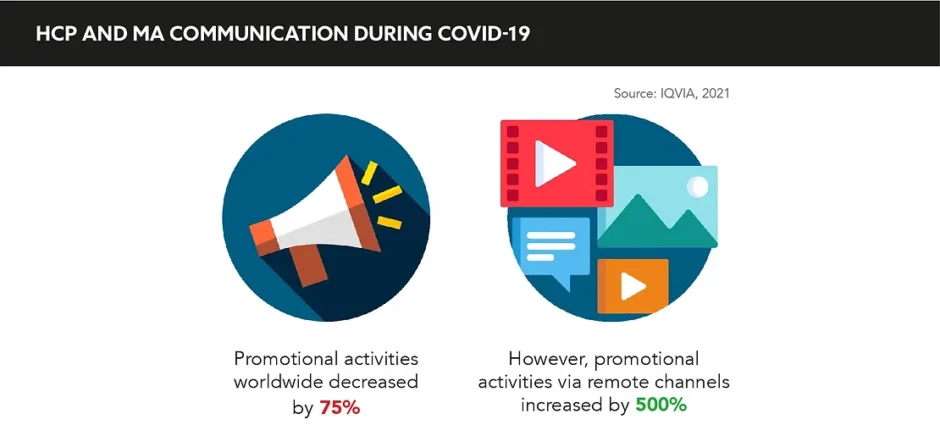The amount of digital content being created for healthcare professionals has grown exponentially. Medical affairs teams must find a way to cut through the noise with their communications
Words by Isabel O’Brien
When confronted with a lively crowd of people, the brain will at first feel overwhelmed. Sensory overload is the mind struggling to comprehend an explosion of sound, but thanks to a phenomenon called ‘the cocktail effect’, it can pinpoint a focus.
The cocktail effect describes the brain’s ability to focus on a particular stimulus, while filtering out a range of conflicting sounds. The science behind this discovery dates back to 1953, but it was not until the past decade that this function was harnessed as a valuable engagement tool.
While the brain can zone in on specific cues despite distractions, research suggests that it is most attracted to references to itself. Human beings favour communications and experiences that are personalised. The question is, what scope is there for extending this approach to medical affairs engagement strategies?
A digital circus
As COVID-19 continues to stretch hospital capacities, waiting lists and workforce morale, healthcare professionals are still under immense pressure, and are in danger of becoming disillusioned.
Speaking at ‘Reuters Events: Pharma 2021’, Robert Stevens, Vice President and Global Head, Digital Medical Affairs, Novartis, warns: “Some 51% of healthcare professionals would not recommend being a doctor to their own child.”
As customers, HCPs are operating in highly-challenging working conditions, but they are also in urgent need of receiving the latest medical insights and product information. “The most important thing is making sure that doctors are staying on top of the latest medical information,” affirms Stevens. The mission is clear, but the pursuit of this goal requires a transformative approach.
While strategies like personalising subscriber custom fields on emails can increase the chance of engagement, new approaches to personalisation are needed for teams to thrive in an ever more chaotic digital circus.
“There is this tidal wave of content, being created and distributed through various channels, and we must pay close attention to it so that HCPs can get the information when they need it and how they need it,” continues Stevens.
Prioritise personalisation
The next phase of personalisation involves a fully-fledged omnichannel strategy that demands personalisation from the email greeting right down to complete segmentation. Also speaking at the Reuters event, Pierre Côte, Transversal Project Lead, Franchise and Product Strategy, Sanofi Pasteur, says: “It must be at their convenience – not at our convenience. Personalisation comes from offering what the customer wants.” He adds that experiences must appeal to each HCP as an individual, otherwise no value is being created at all.
It must be at their convenience – not at our convenience
Delivering a convenient customer experience has been a historic challenge for MA, but the digital transformation of the pandemic has served as a catalyst for making evolution a widespread reality. “We were doing [personalisation] in the past, but it was very labour intensive,” says Côte.
With further digital uptake from HCPs, investment in analytics is now a budgetary priority and is enabling teams to bolster their capabilities. “Now with omnichannel analytics we can not only scale but also expand the spectrum,” adds Côte. Looking to future, he envisions a more seamless, coordinated and curated experience for customers.
Avoid pitfalls
While an omnichannel strategy must actively be pursued, its implementation must be balanced with care in order to not over-segment a customer base. Although analytics enable HCPs to be grouped and targeted on both a platform and a content level, discretion must be applied to ensure an increase, rather than a decrease in productivity.
“You can microsegment archetypes and suddenly you can have 12, 32 or 64 different types of personas,” says Stevens. He describes that while this is positive, targeting on such a granular level can easily become “unmanageable”. As with any advancement, it is crucial to balance transformation with careful consideration of complications.
Other challenges include finding a place for medical science liaisons in the omnichannel revolution, given that they have valuable skillsets and expertise that could be eroded by automation. Another is proving the ROI for omnichannel ventures, meaning that senior leaders must exercise patience when it comes to results and financial wins.
But overall, the consensus is that omnichannel is an important and necessary advancement, which is long overdue to be implemented by the MA function. While advanced personalisation before the pandemic was limited and considered too difficult to execute, omnichannel is lighting up a path to a brighter future. “It is like HCP journey architecture,” says Stevens. And Côte adds that “omnichannel is the continuum of information”.
Now that teams have the tools to truly personalise their approach, they can target their communications and leap out above the noise of the crowd.







